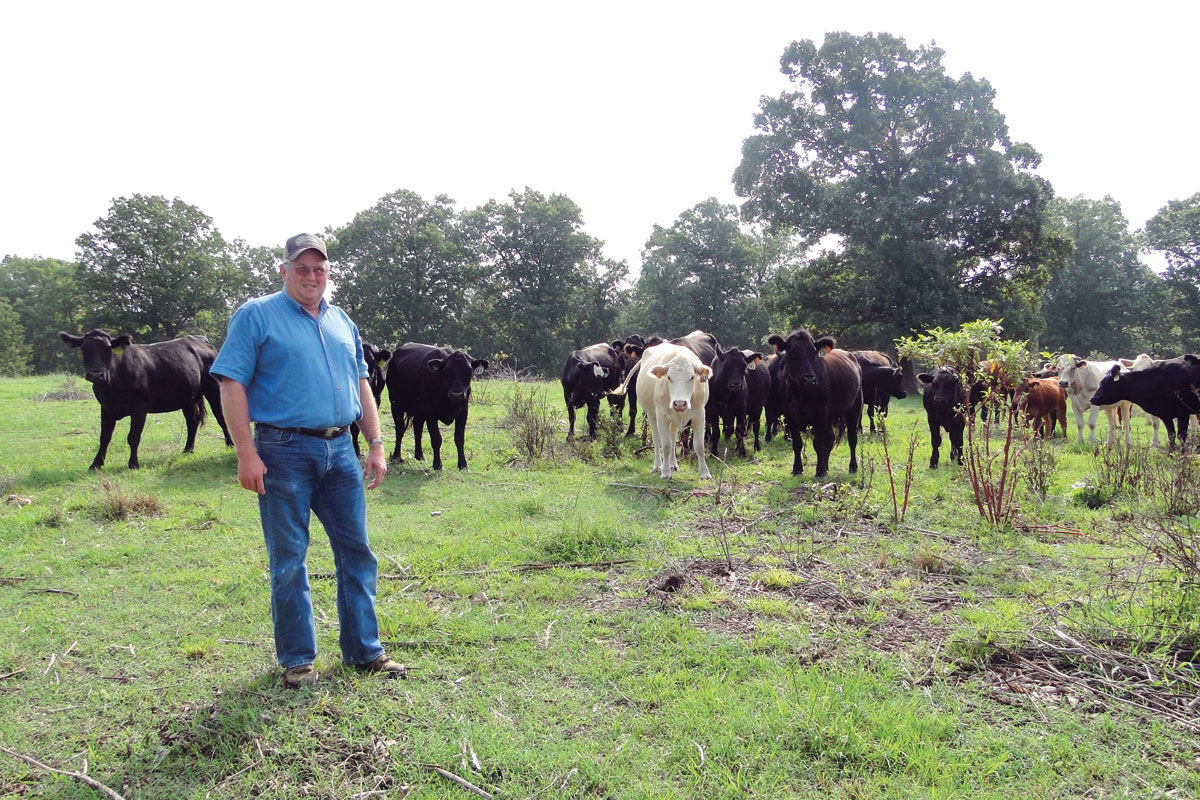
Many people in agriculture have the same dream: owning and working full-time on a successful farm. The pathways, however, to fulfilling that dream are varied and individual. John and Casey Asbury of Oak Grove, Ark., are part way there with John working full time raising chickens and commercial cattle.
They raise broilers for Tyson and commercial beef in a cow/calf operation in partnership with John’s father, who is also named John, and his brother Andrew.
“I’m now paying on the chicken houses and building equity in my cattle so someday, if all goes well, I will have a 2,000-acre farm with 500 cows of my own,” John said.
John is in the process of purchasing four chicken houses built in the 1990s on an owner/lease agreement with his dad. The hard sided houses are 42-foot by 400-foot and are currently used to raise 7-pound broilers in 52 to 55 days. Each house holds 18,300 chickens.
The growing process is highly regimented. Newborn chicks are delivered and cordoned off to half of the available space for the first two weeks. During this time, the chicks are fed a starter ration supplied by Tyson. Then chickens are given access to the entire house and transition to growers feed.
About a week before the chickens are to leave for processing, the field man from Tyson pulls fat from a few birds to determine the quality of the bird in terms of weight and feed conversion. The settlement is based on average weight and amount of feed used. All growers within an area that have their chickens picked up within the same week compete against each other for a premium price.
“The field man is important because he not only checks the chickens for quality and health, he is there to help the grower get the biggest bang for his buck,” John said.
One of the reasons Tyson is successful is that the company is continually experimenting with genetics, feed composition and living conditions in order to get the most weight for the least amount of money in the least amount of time.
“The industry is always changing and upgrading facilities to meet researched improvements is just part of that industry. Right now, I am switching to LED lighting because that light makes the chickens more comfortable making them grow better,” John said.
Once a year, John cleans out the houses himself, removing litter down to the floor, which is then spread on fields. That access to chicken litter as fertilizer makes cows a logical and compatible combination. John chooses to purchase almost all of his hay because he prefers using the land for raising the greatest number of cows it will easily support.
The commercial cattle partnership includes 1,000 acres for cattle, with John raising 220 cows of his own, some which he purchases. When buying a cow, he looks for one that is 3 to 4 years old, has already had one calf and has bred back. He looks for good udder quality, good calf-birthing hips and sound structure especially in terms of the feet. He culls cows when they do not breed back, have temperament issues, a bad udder or a broken down mouth with poor teeth that prevent proper eating.
The herd of 400 mommas is supported by 23 bulls with new ones being purchased all the time.
“I keep my own records to keep bloodlines separate and cow/calf performance high,” John explained. “Our bloodlines are stable so we no longer AI.”
In addition, the operation prefers fall calving because of fewer intestinal issues like scours and because the calves are ready for the grass when it’s new and sprouts in the spring. The cows are fed both cake and grain daily in the winter so they produce good milk for their growing calves.
John supplements his income by fence building for a neighbor and custom baling on shares two or three times a year. Always looking to improve his own place, he has recently completed fencing his acreage into 10-acre padlocks with water tank access for each paddock. Water is supplied by two wells with the last one, according to John, deeper than was actually needed but ready to handle drought if it occurs.







